Why Is My Snake Plant Turning Yellow
Snake plants are a beloved addition to many homes and offices, thanks to their upright striking appearance and low maintenance requirements. However, even these hardy plants can encounter issues, with yellowing leaves being a common concern. If you’ve noticed your snake plant leaves turning yellow, don’t worry! This guide will help you understand the causes and solutions to restore your plant’s vibrant health.
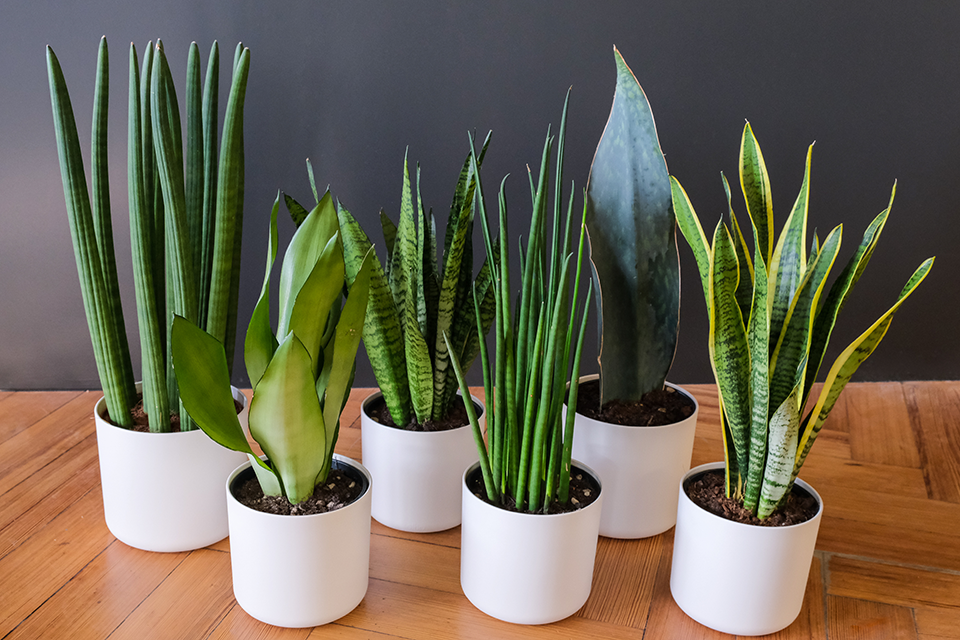
Common Causes of Yellowing Leaves
Understanding what causes the yellowing snake plants can help you address the issue effectively. Here are the most common reasons why your snake plant’s leaves might be turning yellow:
Overwatering
Overwatering is the most common reason snake plants turn yellow. Snake plants are highly drought-tolerant, and overwatering can lead to root rot, yellowing leaves, and even the plant’s death. To your surprise, most plants, including snake plants, don’t need a strict regular watering schedule.
Poor drainage can also cause overwatering issues. If the soil retains too much water, it can suffocate the roots, leading to yellowing leaves. It’s essential to grow snake plants in containers with drainage holes to allow excess water to escape and collect in a saucer or tray.
Underwatering
On the flip side, underwatering can also cause yellow leaves. While snake plants are drought-tolerant, they still need occasional watering. If neglected for too long, their leaves can become dehydrated and yellow.
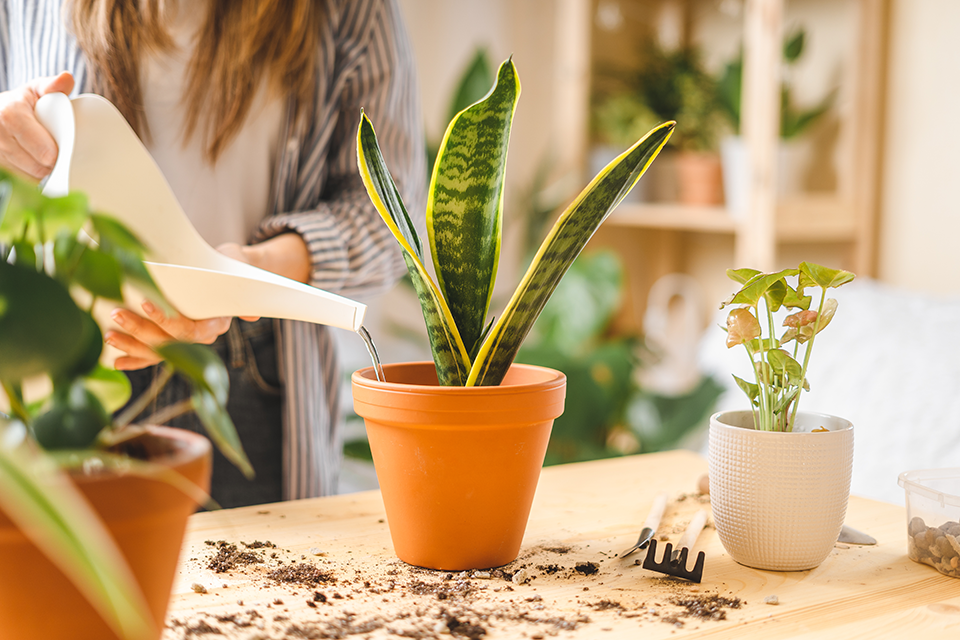
Too Much Light
Versatile snake plants can adapt to full sun or lower-light conditions but grow best with bright, indirect light. Pale, yellow, or brown spots on otherwise healthy green leaves can indicate sunburn from too much direct sunlight. Ensure that the sun exposure remains filtered or indirect.
To prevent leaf scorch or burn, avoid placing them in intense mid-day light or in a window that receives more than five hours of sunlight per day. You can identify excessive sunlight as the culprit if the yellowing leaves are on the window side of the plant. Another sign of too much light is dry, wrinkled leaves.
Too Little Light
Snake plants are often placed in dark corners of a home. While they can tolerate low light conditions, inadequate light can affect their health. In extremely low-light conditions, variegated leaves may turn green, and their patterns can become less distinct. The foliage may also turn pale, often yellow.
However, it’s important to increase light levels gradually. Don’t move a snake plant from low light directly into a bright window. Instead, introduce the plant to increased light levels over several weeks. This gradual adjustment allows the plant to acclimatize without scorching or burning the leaves. If the light resource is not available, consider using a grow light for indoor plants.
Inconsistent Temperature
Snake plants prefer a consistent temperature range between 60-80°F (15-27°C). If your plant has recently experienced a sudden temperature change or is by a drafty door, window, or air vent, inconsistent temperature could stress the plant and cause its leaves to turn yellow.
Pests
Though not often, several houseplant pests can affect snake plants. As insects like scale, mealybugs, aphids, and spider mites suck sap from the plant’s foliage, leaves can turn yellow and die. Regularly checking your plants can help catch these pests early.
Too Much or Not Enough Fertilizer
Snake plants generally need little fertilizer, but if it’s been a few years since you fed your plant or gave it fresh soil, a nutrient deficiency could cause leaves to turn yellow. On the other hand, overfeeding can cause dry, pale leaf edges and wilting.
Normal Leaf Growth
An occasional yellow leaf is completely normal for a snake plant. As the plant ages, old leaves yellow, die, and drop off as they’re replaced with new ones. What’s more, given the numerous types and cultivars of snake plants, you’ll find a wide range of colors and patterns.
What to Do with Yellowing Leaves on a Snake Plant
Once you determine the cause of the yellowing leaves on your snake plant, it’s important to address it quickly to maintain the plant’s health. Fortunately, yellowing leaves can sometimes be reversed. If the pale color or loss of variegation is due to low light, relocating the plant to a sunnier spot can help the leaves regain their green hue.
However, if the leaves have become bright yellow or brown, it’s best to remove them. Use sharp, clean garden snips or hand pruners to cut the affected leaf off at the base of the plant. Want to prevent yellowing snake plant leaves in the future?
Repotting
Repot your snake plant every 3 to 4 years. Over time, the plant can become root-bound in its container, which can stress the plant and cause yellow leaves. Check if the roots have run out of space by gently removing the plant from its pot. If you see tightly circling roots and little visible soil, it’s time to move it to a larger container.
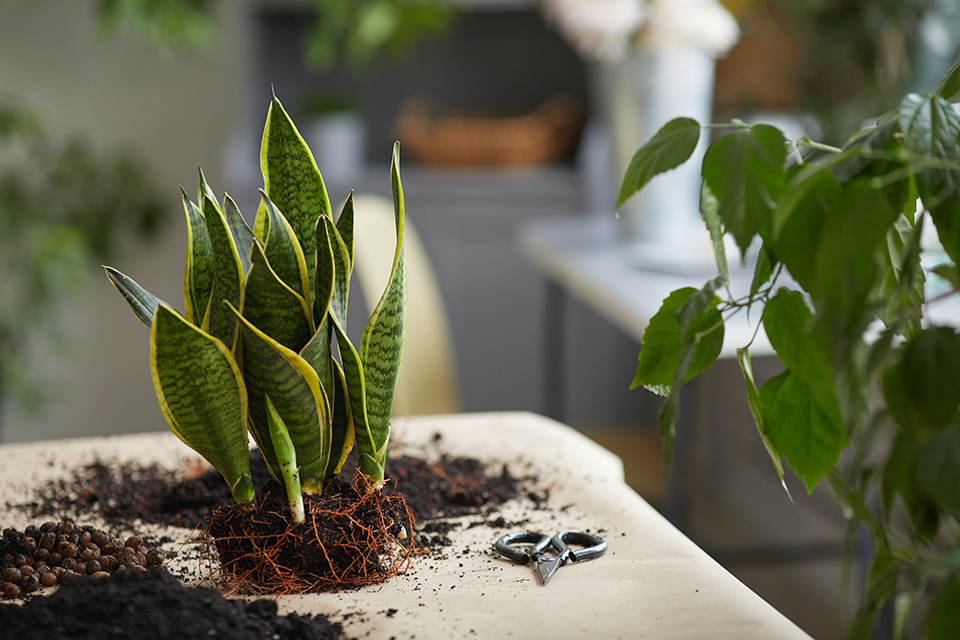
Read more on how to propagate snake plant.
Avoid Temperature Fluctuations
Protect your snake plant from temperature extremes. These plants thrive in stable, average room temperatures. Avoid placing them near doors frequently opened during cold weather or drafty windows, as temperatures below 60°F (15°C) can damage the foliage and cause yellowing leaves.
Watering Practices
Ensure you water your snake plant properly. Allow the soil to dry out completely between waterings. Overwatering can lead to root rot and yellow leaves. If the soil feels soggy, let it dry out before watering again. In severe cases, repot the plant with fresh soil and check the roots for rot.
Pest Management
Regularly inspect your snake plant for signs of pests such as scale, mealybugs, aphids, and spider mites. Remove insects with a spray of water or a cotton swab dipped in rubbing alcohol. To prevent future infestations, use neem oil or horticultural soap and maintain the plant’s overall health.
Nutrient Balance
Ensure your snake plant receives the right nutrients. If you haven’t fertilized or refreshed the soil in a few years, consider repotting with fresh soil. If overfertilization is suspected, flush the soil with water to remove excess nutrients. Fertilize the plant only twice a year, in spring and summer, to avoid nutrient imbalances.
Conclusion
Snake plants are resilient and forgiving, but they do require proper care to thrive. By understanding the causes of yellowing leaves and taking appropriate action, you can ensure your snake plant remains a stunning, healthy addition to your home.







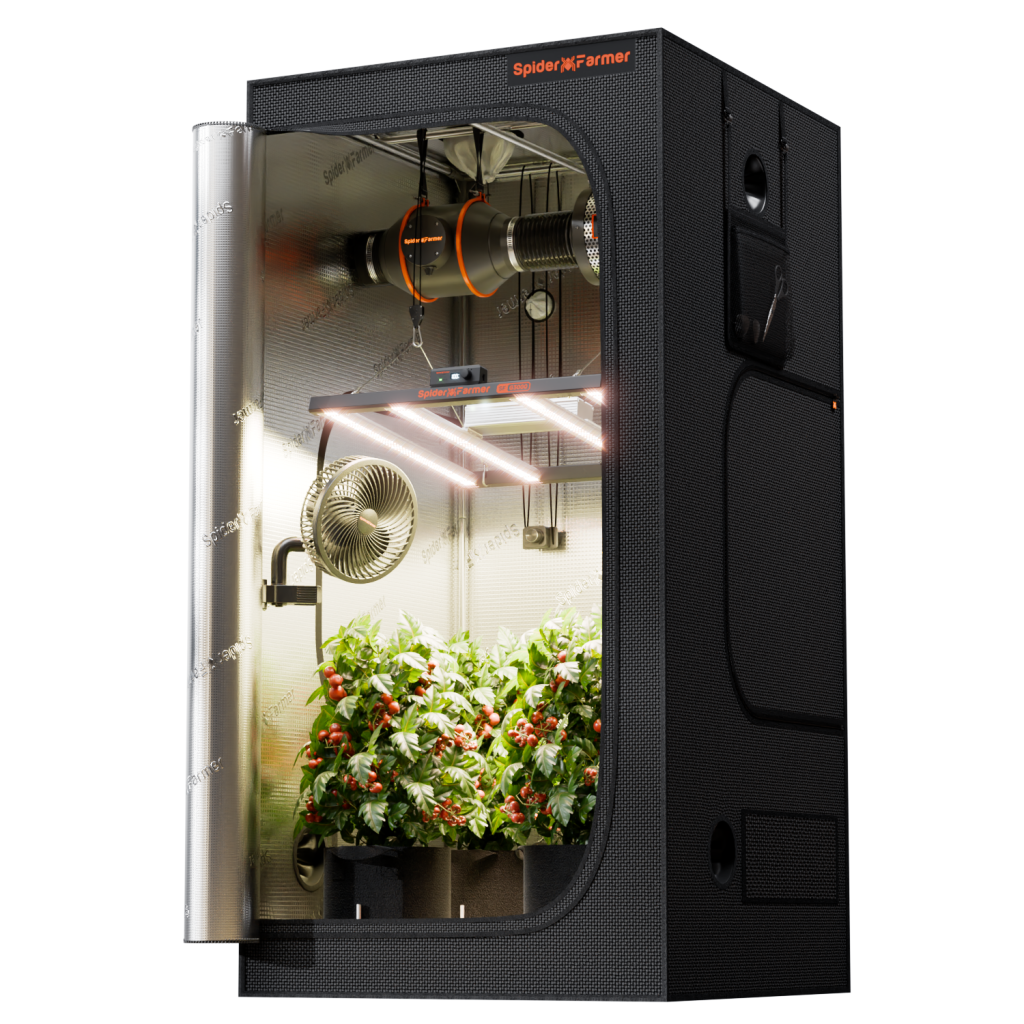

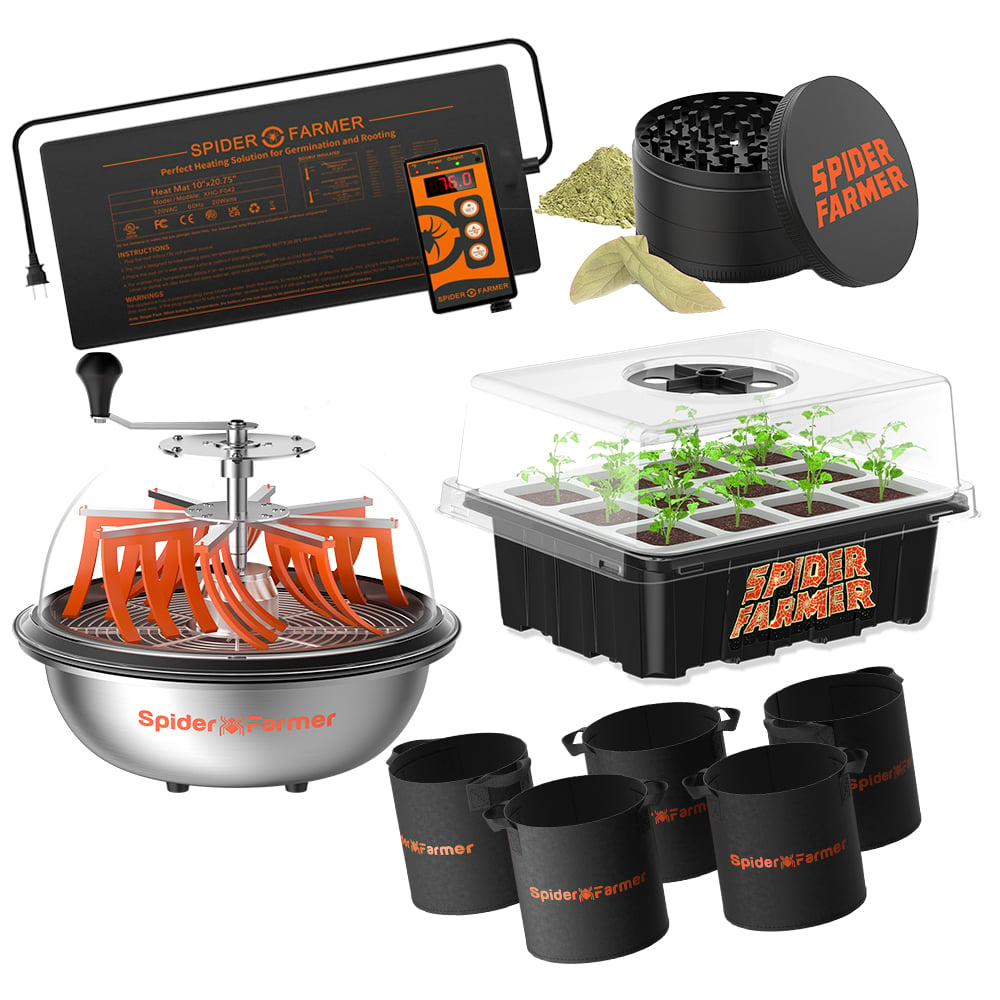
Leave a reply
You must be logged in to post a comment.